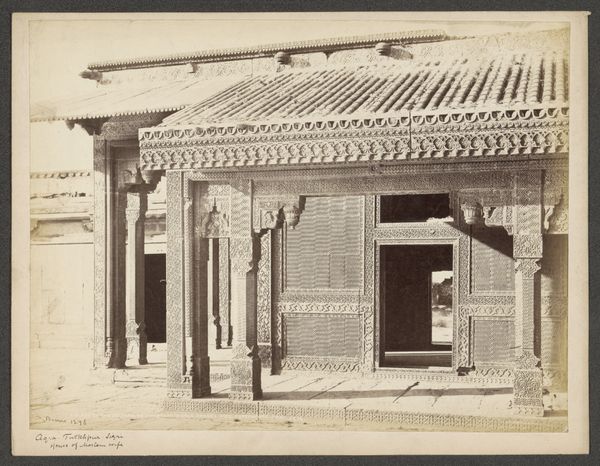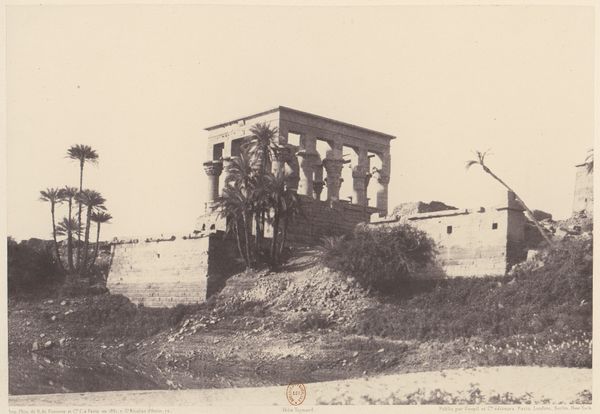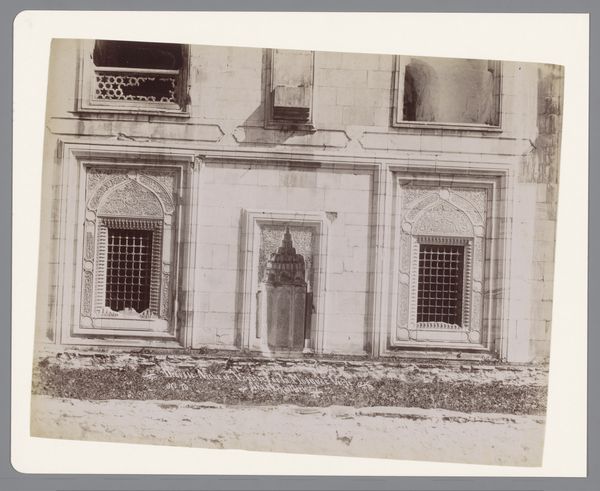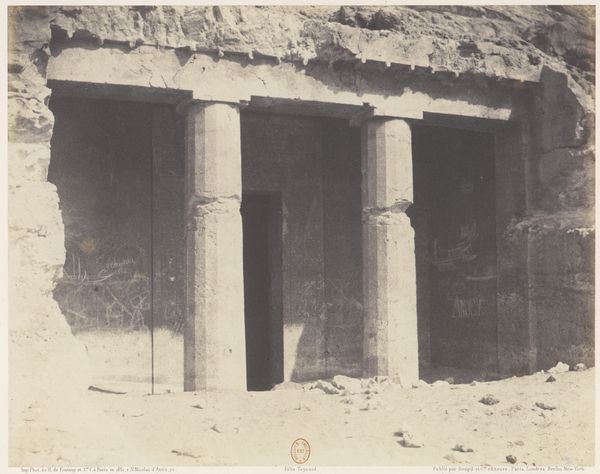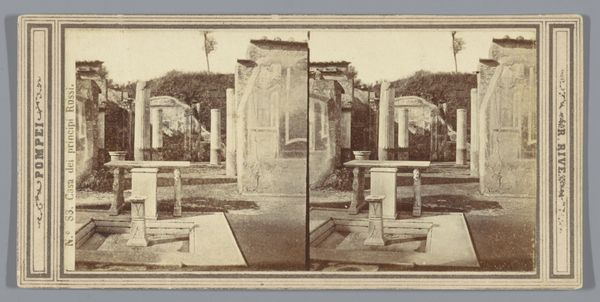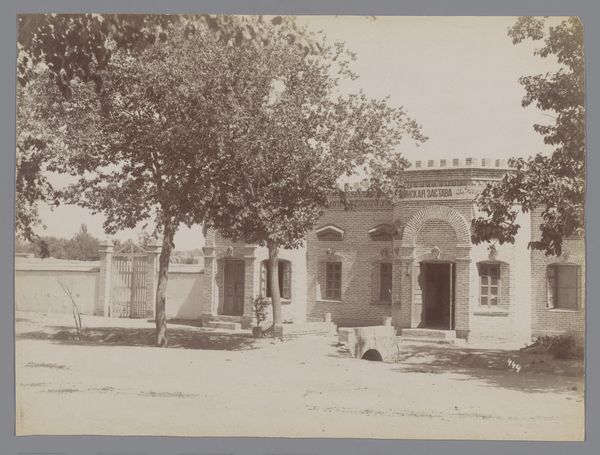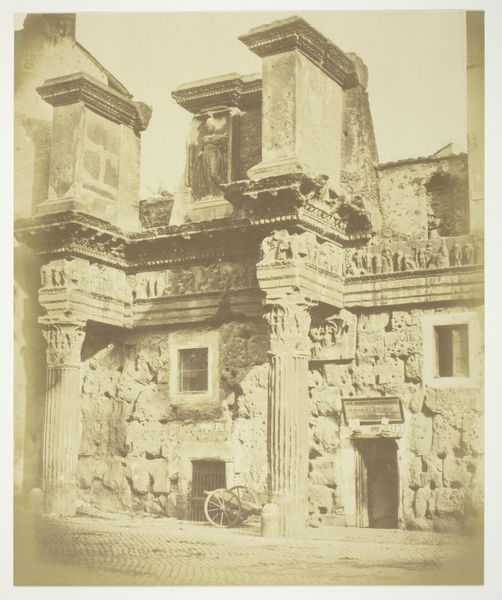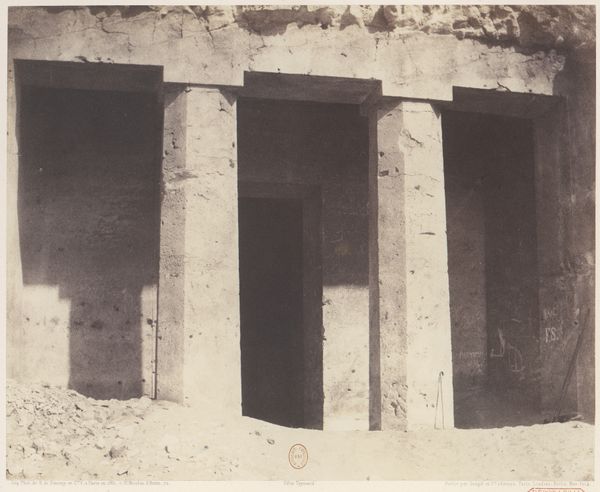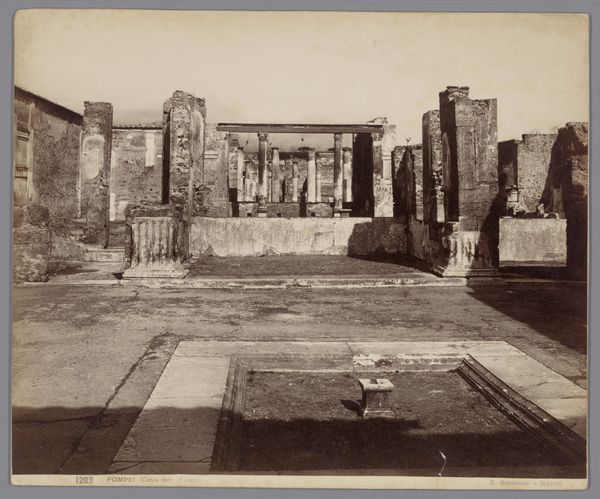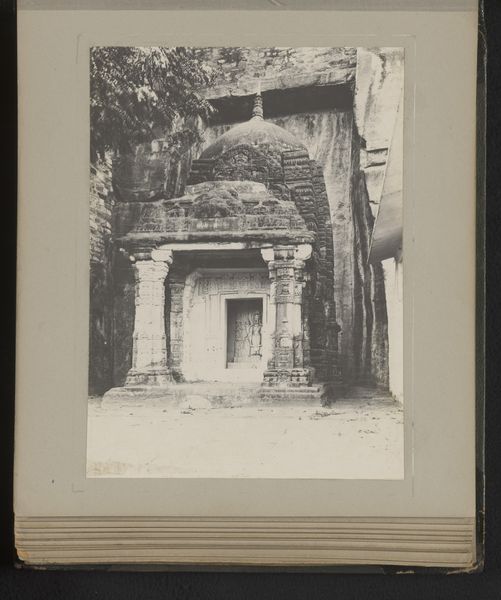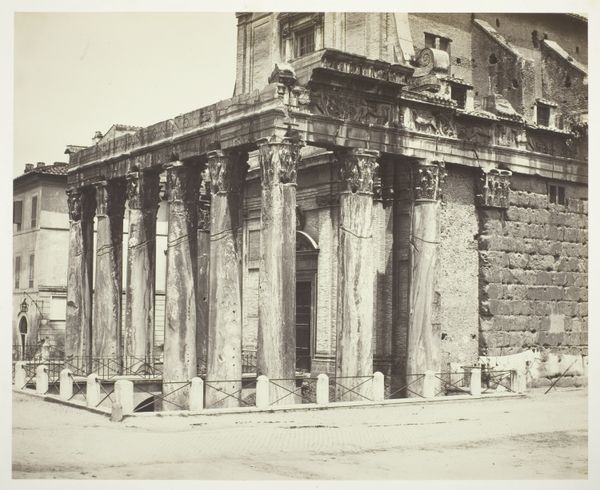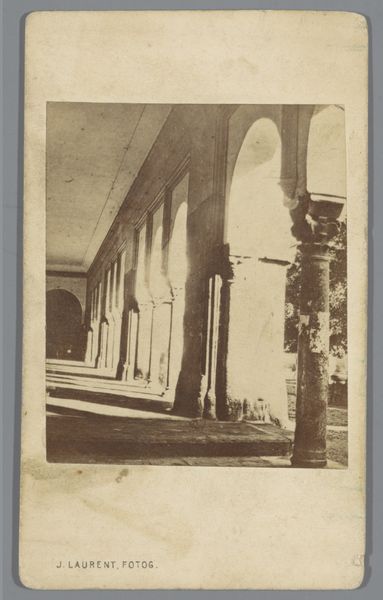
photography
#
landscape
#
classical-realism
#
photography
#
ancient-mediterranean
Copyright: Public domain
Curator: This albumen print from 1880, captured by Roberto Rive, shows the "House of Argo of Herculaneum" now held in the Rijksmuseum. What stands out to you about this particular image? Editor: There’s an immediate feeling of decay. The faded sepia tones almost amplify the ruinous state, a tangible sense of time's relentless passage working its way through these pillars and the remnants of classical architecture. It makes me wonder about the specific material processes which have resulted in the effects of age we're observing. Curator: The image, taken during the late 19th century, holds significant historical value in documenting the early archeological digs at Herculaneum. Photography was crucial for disseminating visual records of such sites. The house itself, as we understand from available information about similar domestic architecture from the period, reflects aspects of the societal stratification that existed then. Editor: I'm drawn to how Rive composed this shot. It emphasizes verticality, all those weathered columns creating an almost rhythmic, linear pattern, contrasted with the unruly vegetation on the left. It forces us to consider the materials—the local stone versus what must have been transported from a distance and by what labor—and the class implications of construction. The fluted detail suggests meticulous craftsmanship, possibly indicating the affluence of those who inhabited this place. Curator: And it provokes thoughts about our continued fascination with antiquity, doesn’t it? Consider the role museums play. Presenting these fragments divorced from their original societal fabric offers a selective understanding of history, and a commentary of current social values by those who choose what will be exhibited, archived, or, even, funded. Editor: True. Thinking materially, that weathered look isn’t just aesthetic; it embodies real environmental forces. This building’s skeleton is still standing only by material means of endurance through natural causes—it emphasizes how intrinsic architecture is to both human and environmental timelines. What kind of preservation methods would be adequate for structures of this sort and how that effort might impact future findings is vital to discuss. Curator: It gives one pause when considering what of our time, what artifacts and stories, will remain, how they'll be regarded, and the powers shaping those interpretations. Editor: Absolutely. The materials themselves, bearing witness to time, become their own sort of archive, prompting vital dialogues about preservation and history.
Comments
No comments
Be the first to comment and join the conversation on the ultimate creative platform.
